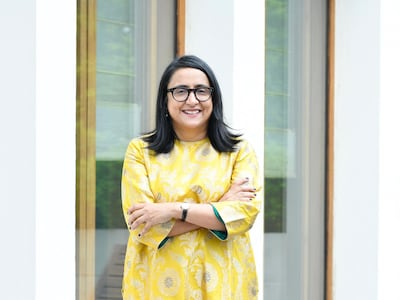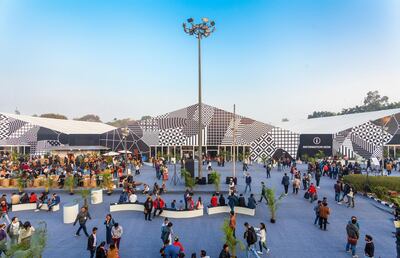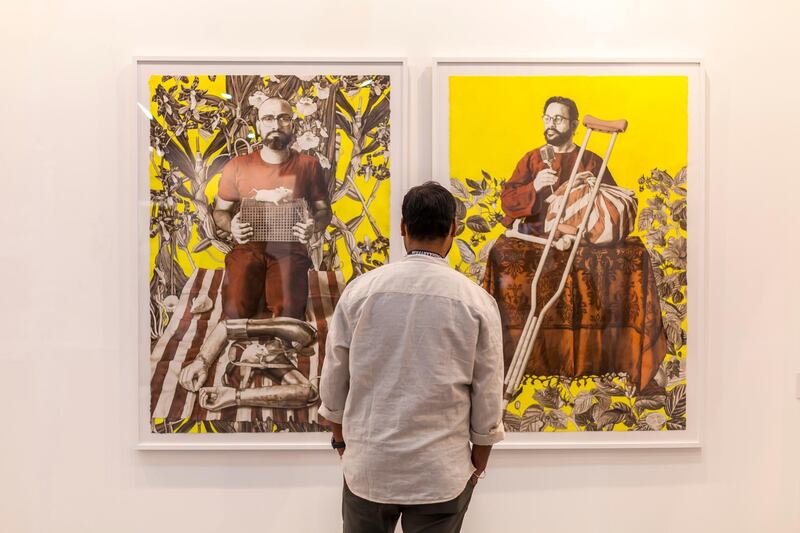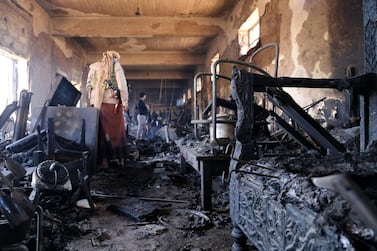It goes without saying that not all art fairs are created equal. There are the international mega-events where galleries compete to make the biggest sales, but also the smaller, regional ones that balance the roles of commercial entity and community platform. India Art Fair is one of the latter.
Now in its 12th year, India's biggest art event is set to welcome 65 galleries from 20 global cities in New Delhi from Wednesday, January 29 to Sunday, February 2. This year, the fair has expanded its performance and talks programme, as well its selection of art books, workshops and masterclasses for young artists.
This robust programming is led by director Jagdip Jagpal, whose background includes running partnerships and programmes at Tate in the UK and serving as development board member at the Royal College of Art, London.
When she took over the reins in 2018, Jagpal helped overhaul the fair – strengthening its curatorial elements and improving its set-up, from redesigned booths to upgraded lighting. It was also the year that blue-chip galleries such as David Zwirner and Blain Southern participated at the fair for the first time.
More importantly, she has shifted the focus back to local galleries and to highlighting artistic communities from South Asia. For 2020, Jagpal continues this trajectory. At least 70 per cent of the fair's floor space is dedicated to institutions from the region.
"Why would people come to India for an international player that you can see down your own road or nearby?," says Jagpal, adding it would be pretty "bland" if the fair were to bring in mostly global names.
"We as an audience in India and South Asia have an opportunity to see South Asian artwork on the same platform as and interacting with artists from around the world," she says, explaining that the fair has to be extremely selective, especially when it comes to choosing participating galleries from outside the region.
When David Zwirner exhibited in 2018, for example, it was required to bring in new works, for which it decided to commission Yayoi Kusama's Infinity Nets series, which was purchased by a collector from Mumbai. "For these blue-chip galleries … when they bring work for India, they want these to be works that will remain in India," says Jagpal, who hopes the artists they bring will ideally present "historical stories that resonate with Indian audiences".
This year, the fair will feature galleries from across India, including big names from Mumbai and Delhi such as Chatterjee & Lal, Jhaveri Contemporary, Galerie Isa, Nature Morte, Gallery Espace and Exhibit 320, but also from Kolkata, Chennai, Hyderabad, Bengaluru, Alibaug and Vadodara. Internationally, first-timers from Sri Lanka (Saskia Fernando) and South Korea (Gallery Tableau) are also set to visit, along returning galleries from London and New York.

“We make sure the diversity of artists is great, and that people can access different price points and are in a position to support the art through purchasing,” says Jagpal. “Every year, we intend on raising quality. That goes for everything, from a piece of work to the quality of the experience, to the facade, to using every opportunity we can to put the artist at the forefront.”
The fair's Platform section, which primarily showcases emerging artists, is one way of providing collectives and new art practices with a space to be recognised. Jagpal has also been responsible for building relationships with cultural organisations and foundations from the region, including the Kochi-Muziris Biennale and Serendipity Arts Festival, as well as the Kiran Nadar Museum of Art and Chennai Photo Biennale, which will be new to the fair this year.
"We're creating more opportunities for interaction with artists because here the contemporary arts, and even modern arts, audience is very small," she says of India, adding that artistic commissions such as the design for the venue's tent facade, completed by Indian artist and illustrator Sameer Kulavoor, and institutional collaborations are all part of this goal. She says it's the art community's job to ensure more people can access art and become more engaged and passionate about it.
"That's something that I always have to grow. If you want to have a market for purchasing art, you also need to have a market for people to be interested."

Jagpal's vision for the fair has always been more than creating a successful sales event. "We're an art fair with a social conscience," she says. Her approach is more holistic, to consider audiences, collectors and gallerists alike. Smaller, local galleries often struggle in keeping up with costs, which has a cascading effect on artists and artistic production. "India does not have major public art funding for learning and for making art," she says, which means that galleries have to fill the gap in the public sector by running their own initiatives and putting on exhibitions regularly. Events such as India Art Fair and the programmes it develops also play a part.
One highlight for India Art Fair 2020 is the growth of its performance programme, which will feature award-
winning theatre artist Maya Krishna Rao and Nigerian multimedia artist Jelili Atiku, who is known for exploring themes of human rights and justice. "Performance art has been growing internationally over the last decade, and it is something that audiences very much connect to. It provides a creative way to get people thinking about different topics and issues," says Jagpal. "South Asia has managed to produce some of the best performance artists in the world, and that's a sign of diversity and strength of this art sector [in the region]."
In a setting where money flows, performance art adds something unique, and the fair's emphasis on this art form speaks to Jagpal's determination to make it more than only a place for sales. "Performance art is not something that going to make an artist a millionaire. It is committed to … talking about issues in society."
Presentations by renowned names add to the fair's role in cultivating a flourishing artistic discourse. The 2020 edition's Auditorium Talks will include discussions with Turner Prize nominee Naeem Mohaiemen and Modernist Nilima Sheikh.
Magnum photographer Martin Parr will unveil a live project that will continually capture people's portraits during the fair and print the work to be displayed, creating an exhibition in real time. As the fair prepares to open its doors, protests against the passing of a controversial citizenship law continue to rage across India. Though the event is expected to continue as planned, the incidents of unrest raise an important question: does an art event have a place in the face of social and political turmoil?
“I think it goes without saying that people are more important than art,” says Jagpal. “With Delhi being the political capital, one would expect protests … The gathering at the fair will provide a forum for discussion and debate in the art community about current issues.”
She adds: "Whether it's historical or current, art has a way of supporting people's mental health that has been affected by the things happening in society and politics. It is a communication tool and a means of sharing stories, persuading people and informing them about society and the world – that's what artists have been doing."







